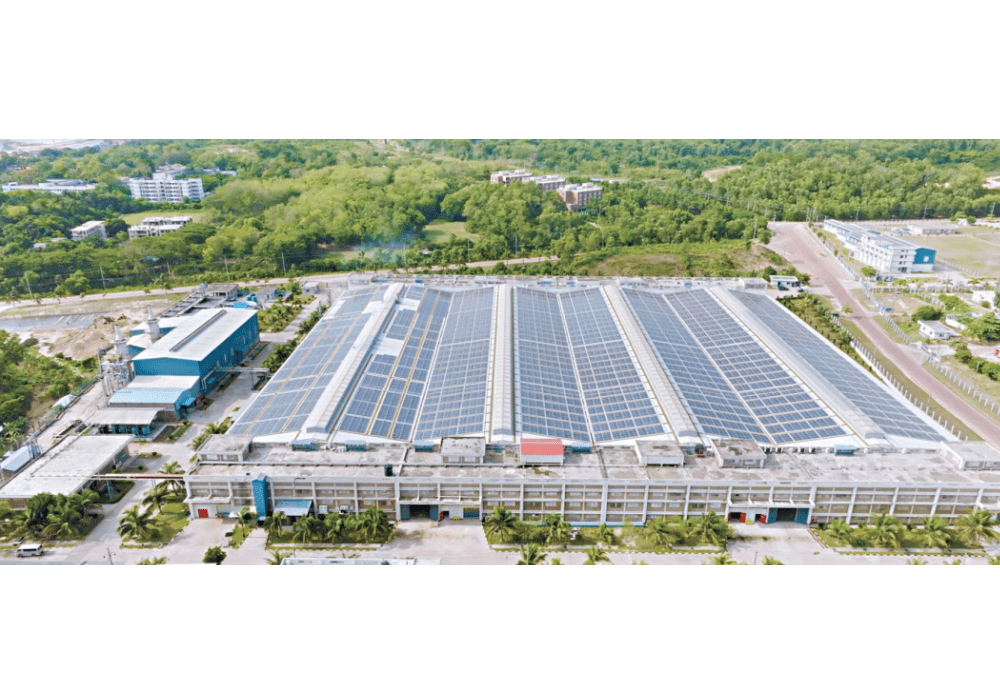Bangladeshi factories are embracing rooftop solar to cut emissions and reduce energy costs. Global buyers’ green compliance pressure is making renewables a key advantage for exporters. Industries across Bangladesh are rapidly adopting rooftop solar, turning factory buildings into mini power plants. What was once seen as risky is now viewed as both economical and essential for long-term competitiveness.
Read More: ATEC Secures USD 15.5 Million to Expand Clean Cooking Solutions
Early movers like Youngone Corporation set the tone by building Bangladesh’s largest rooftop solar project in Chattogram, which now generates up to 140 megawatt hours of electricity daily and has already prevented nearly 96,000 tonnes of carbon emissions. Renata PLC has also installed 5.6 MWp capacity, cutting 3.5 million kilograms of emissions annually and meeting 10 percent of its power demand. Similarly, Ha-Meem Group has rolled out 12.2 MWp across its factories, with further expansion plans that align with its pledge to reach net zero by 2050.
The financial case is equally strong. While grid electricity costs Tk 10 to 12 per kilowatt hour, rooftop solar delivers power at nearly half the price. With energy subsidies expected to phase out in the future, renewables are increasingly viewed as the only sustainable path for industries to remain competitive.
Global buyers are also driving the shift. Apparel giants like American Eagle, Levi’s, and GAP now require suppliers to source part of their electricity from renewables. Without proof of clean energy adoption, contracts are at risk. This makes solar not just an environmental choice but a business necessity for exporters.
Read More: Bangladesh’s Exports to US May Drop $1.25b Under Current Tariffs
Despite challenges such as high upfront investment, complicated net metering approvals, and duties on solar equipment, momentum is building. According to IDCOL, more than 30 companies expressed interest in rooftop solar in the past eight months alone, with total financed capacity already reaching 165 MWp across 52 factories. Experts believe Bangladesh could generate up to 4,000 MWp through rooftop solar on industrial buildings.
As gas reserves decline and energy prices face upward pressure, rooftop solar is emerging as both a shield against future risks and a competitive tool in the global market. For Bangladesh’s export driven industries, it is quickly becoming clear: solar power is no longer optional, it is the future.


